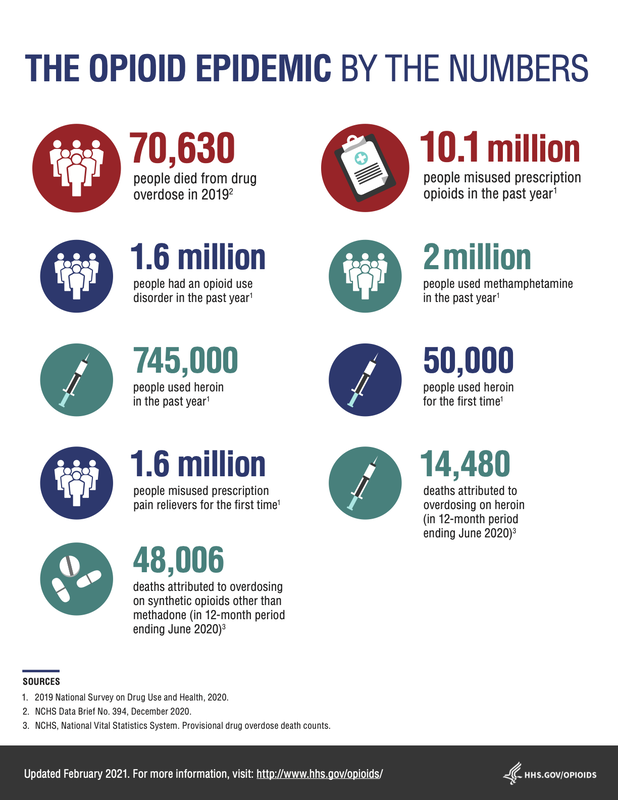|
What are Opioids?
Opioids, sometimes called narcotics, are medications prescribed by doctors to treat persistent or severe pain. They are used by people with chronic headaches and backaches, by patients recovering from surgery or experiencing severe pain associated with cancer, and by adults and children who have gotten hurt playing sports or who have been seriously injured in falls, auto accidents or other incidents. Opioids are a class of drugs that include the illegal drug heroin, synthetic opioids such as fentanyl, and pain relievers available legally by prescription, such as oxycodone (OxyContin®), hydrocodone (Vicodin®), codeine, morphine, and many others. |
Opioids vs Opiates
Opiates are substances with active ingredients that are naturally derived from opium. Common opiates include morphine and codeine, which are both directly made from opium found in poppy plants.
Opioids are synthetically manufactured substances that mimic the "natural" effects of opium. Some opioids are fully synthetic, while others are only partially synthetic.
Opiates are substances with active ingredients that are naturally derived from opium. Common opiates include morphine and codeine, which are both directly made from opium found in poppy plants.
Opioids are synthetically manufactured substances that mimic the "natural" effects of opium. Some opioids are fully synthetic, while others are only partially synthetic.
|
Opiate Effects and Abuse
Opiates produce euphoric and tranquil effects when taken in amounts that are larger than prescribed. The pleasant, care-free feelings a person experiences when taking these drugs are often what leads to destructive patterns of abuse. Opiate addiction is often characterized by compulsive drug-seeking behavior. For example, in an attempt to obtain more of the drug, a person may visit multiple doctors in order to get new prescriptions, otherwise known as “doctor shopping.” The pathological urges to use these drugs can also drive people to borrow, buy or steal the drugs from friends and family. As an act of desperation, some individuals may resort to seeking out heroin, an illegal substance that closely mimics opiate effects is commonly purchased off the streets. Despite the well-known dangers of heroin, it is often easier and cheaper to obtain than opioid pills. What is the U.S. Opioid Epidemic?
In the late 1990s, pharmaceutical companies reassured the medical community that patients would not become addicted to opioid pain relievers and healthcare providers began to prescribe them at greater rates. The increase of prescription opioid medications led to widespread misuse of both prescription and non-prescription opioids before it became clear that these medications could indeed be highly addictive. |
Facts about Opioids
- More than 841,000 people have died since 1999 from drug overdose. Over 70% of drug overdose deaths in 2019 involved an opioid.
- In 2019, an estimate 10.1 million people aged 12 or older misused opioids in the past year. Specifically, 9.7 million people misused prescription pain relievers and 745,000 people used heroin.
- Over 81,000 drug overdose deaths occurred in the United States in the 12 months ending in May 2020, the highest number of overdose deaths ever recorded in a 12-month period, according to recent provisional data from the Centers for Disease Control and Prevention (CDC).

